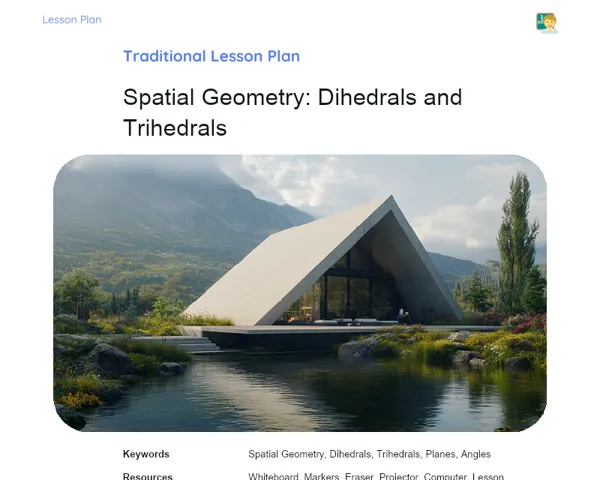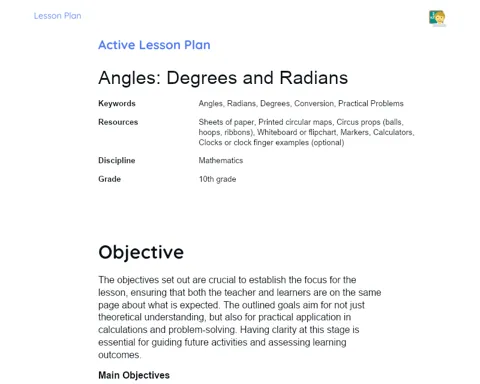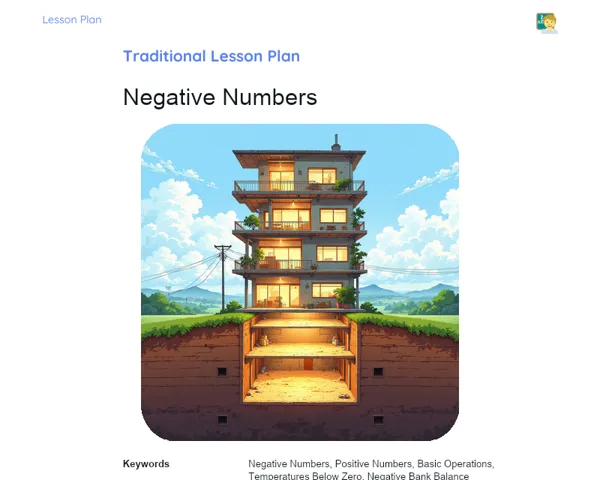Lesson Plan | Lesson Plan Tradisional | Area and Perimeter: Comparison
| Keywords | Area, Perimeter, Geometric shapes, Square, Rectangle, Triangle, Mathematical calculation, Difference between area and perimeter, Practical examples, Problem solving |
| Resources | Whiteboard, Markers, Ruler, Calculator, Sheets of paper, Pencil, Eraser, Projector (optional) |
Objectives
Duration: 10 to 15 minutes
The aim of this lesson plan stage is to introduce students to the concepts of area and perimeter, highlighting their differences and similarities. This will provide a solid foundation for students to calculate both area and perimeter of various geometric shapes and understand the relationship between these measurements.
Objectives Utama:
1. Calculate the areas of geometric shapes such as squares, rectangles, and triangles.
2. Calculate the perimeters of geometric shapes such as squares, rectangles, and triangles.
3. Understand that shapes with the same perimeter can have different areas.
Introduction
Duration: 10 to 15 minutes
The aim of this lesson plan stage is to introduce students to the concepts of area and perimeter, highlighting their differences and similarities. This will provide a solid foundation for students to calculate both area and perimeter of various geometric shapes and understand the relationship between these measurements.
Did you know?
Did you know architects rely on area and perimeter when designing houses and buildings? They need to work out how much space each room will require and the amount of materials for walls and fences. This shows how understanding area and perimeter is practical and useful in the real world.
Contextualization
To kick off the lesson, start by explaining that mathematics plays a role in our lives every day. A good example is when we need to measure land, figure out the amount of material needed for building, or even when we're decorating a room. So, knowing how to calculate areas and perimeters is essential.
Concepts
Duration: 50 to 60 minutes
This stage aims to deepen students' understanding of area and perimeter concepts, enabling them to calculate these measurements in simple geometric shapes and grasp their interrelationship. Through practical examples and problem-solving, students can effectively apply what they've learned.
Relevant Topics
1. Definition of Perimeter: Explain that the perimeter is the total length around a geometric shape. Provide examples of how to calculate the perimeter of simple shapes like squares, rectangles, and triangles.
2. Definition of Area: Explain that the area is the measure of the space within a geometric shape. Use specific formulas for each type of shape (square, rectangle, triangle) and give practical examples.
3. Comparison between Area and Perimeter: Emphasize that shapes with the same perimeter can display different areas. Use examples to illustrate this, such as a rectangle and a square sharing the same perimeter but differing in area.
To Reinforce Learning
1. Calculate the perimeter of a rectangle with sides of 5 cm and 8 cm.
2. Calculate the area of a triangle with a base of 6 cm and a height of 4 cm.
3. Two squares have perimeters of 16 cm and 20 cm, respectively. What’s the difference between their areas?
Feedback
Duration: 20 to 25 minutes
This stage aims to ensure students fully grasp and reinforce their understanding of area and perimeter concepts, while identifying and rectifying any misconceptions. By discussing responses and reflective questions, students can solidify their knowledge and practical application of what they've learnt.
Diskusi Concepts
1. Question 1: Calculate the perimeter of a rectangle with sides of 5 cm and 8 cm. 2. Explain that the perimeter of a rectangle is the total of all its sides. To calculate, you add twice the width and twice the length. So: 2 * 5 cm + 2 * 8 cm = 10 cm + 16 cm = 26 cm. 3. Question 2: Calculate the area of a triangle with a base of 6 cm and a height of 4 cm. 4. Clarify that the area of the triangle is found using the formula: (base * height) / 2. So: (6 cm * 4 cm) / 2 = 24 cm² / 2 = 12 cm². 5. Question 3: Two squares have perimeters of 16 cm and 20 cm, respectively. What's the difference between their areas? 6. To solve this, first find the side length of each square from their perimeter. As the perimeter of a square is 4 times the side, we can calculate: For the square with a perimeter of 16 cm: side = 16 cm / 4 = 4 cm. For the square with a perimeter of 20 cm: side = 20 cm / 4 = 5 cm. Now, calculating the areas: Area of the first square = 4 cm * 4 cm = 16 cm². Area of the second square = 5 cm * 5 cm = 25 cm². Therefore, the area difference is: 25 cm² - 16 cm² = 9 cm².
Engaging Students
1. In what ways do you think knowing area and perimeter can be beneficial in everyday life? 2. Can you think of other scenarios where calculating areas and perimeters is essential? 3. What did you find challenging about calculating the areas and perimeters of these shapes? 4. Why do you reckon shapes with the same perimeter can have different areas? 5. Let's chat about: What was the difference in area between the two squares in the last example?
Conclusion
Duration: 10 to 15 minutes
This stage aims to review and consolidate the basic concepts covered, ensuring students have a clear and practical understanding of area and perimeter, their formulas, and how to apply them in real-life situations.
Summary
['Define perimeter as the total length around a geometric shape.', 'Define area as the measure of the space enclosed within a geometric shape.', 'Formulas for calculating the perimeter and area of squares, rectangles, and triangles.', 'Comparison of area and perimeter, illustrating that shapes with the same perimeter may have different areas.']
Connection
The lesson linked theory to practice by employing real-life examples and practical tasks to calculate areas and perimeters. These included everyday situations like construction projects, where accurate calculations are crucial for determining material quantities and necessary spaces.
Theme Relevance
Understanding area and perimeter is fundamental in day-to-day life, especially in activities such as building, home decor, landscaping, and even in sports. Being able to calculate these measurements allows us to solve real problems effectively.



